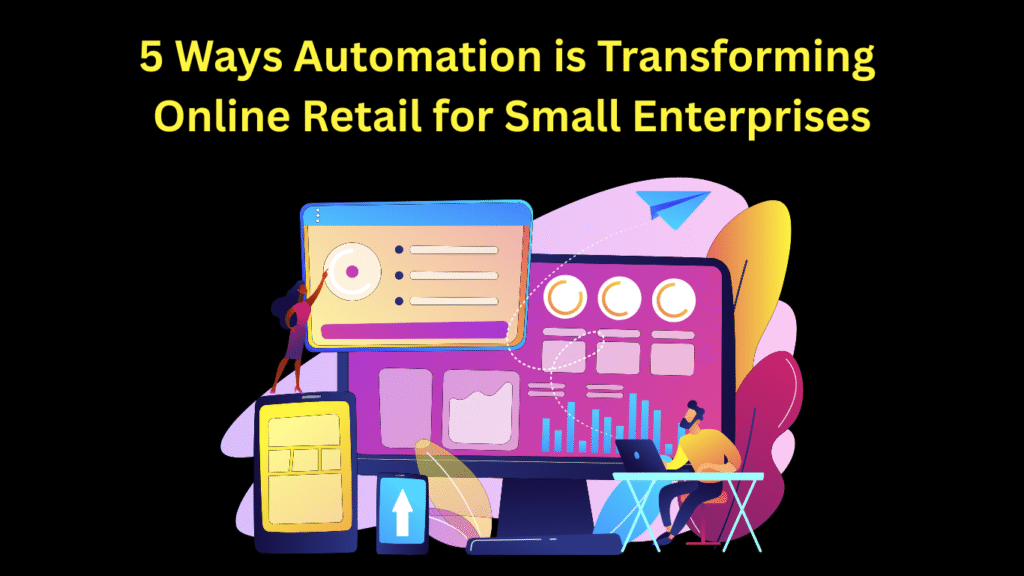Running a small business online can feel like spinning plates while riding a bike. One moment you’re uploading photos, the next you’re answering questions, then you’re updating prices before dinner.. all while trying not to drop the ball.
The difficult part is that every marketplace you sell on has different rules, and small slip-ups can cost you sales.
The more your operation grows, the harder it becomes to keep every description, rate, and purchase accurate.
Automation is shifting that balance. It’s no longer reserved for large corporations; small business owners are adopting simple, affordable systems to work quickly, cut mistakes, and sell across multiple outlets without adding to their workload.
Here’s how it’s reshaping the way small enterprises handle online trade.
1. Why Speed and Accuracy Matter in E-commerce
Online buyers act fast…They compare offers, check availability, and scan reviews within minutes. If your product details are outdated or your reply time is slow, they’ll often move to another seller.
This means your processes must be quick and reliable. It’s not enough to simply post your goods online, they need to be consistent, correctly priced, and synchronised across all channels- from your own website to marketplaces like eBay, Etsy, and Poshmark. POSApt, for example, integrates seamlessly with both eCommerce platforms and its POS system, making product synchronization effortless.
Managing that manually can quickly cause burnout.
2. The Difficulties of Operating on Several Marketplaces
Selling through various outlets sounds like a straightforward way to grow sales, but it brings genuine complications:
- Repeated work – Writing and formatting the same description multiple times.
- Unmatched pricing – Forgetting to adjust rates across all platforms during sales.
- Stock conflicts – Selling the final unit on Etsy while it still appears “available” on Poshmark.
- Platform differences – Each site has unique formatting, photo requirements, and delivery rules.
Even small oversights can lead to cancelled transactions and lost trust. When your workload is already heavy, managing everything manually can become unmanageable.
3. Automation Tools That Make Selling Easier
Automation takes much of this repetitive labour off your hands. The right software can:
- Link inventory across platforms so stock levels are always correct.
- Change prices everywhere from one dashboard.
- Copy listings from one site to another without starting again.
- Renew items automatically to keep them visible in search results.
For example, a free Poshmark bot can handle routine actions like sharing or relisting items, improving visibility without requiring constant attention.
Some services also allow you to move products from your main e-commerce store to marketplaces in just a few clicks. For sellers with large catalogues, this can save hours every week.
These systems are designed to be straightforward, even if you’re not technically minded. They run quietly in the background while you focus on sourcing items, taking quality photos, and offering strong customer service.
4. Clear Advantages for Smaller Sellers
Beyond features, the true impact of automation is felt in the daily running of your store.
You reclaim valuable hours
If creating one product page takes 10 minutes and you publish it to three outlets manually, that’s half an hour on a single item. With automation, that time drops significantly.
Fewer errors
By reducing manual entry, automation keeps prices and stock data uniform, which helps prevent overselling or incorrect details.
Broader reach without extra strain
With a Poshmark bot by Crosslist, your catalogue can remain active on Poshmark while also appearing on eBay, Depop, or Mercari, without doubling your workload.
Better customer satisfaction
Accurate product data, real-time stock, and faster updates help buyers see you as dependable, encouraging repeat purchases and strengthening their trust, loyalty, and overall satisfaction with your store.
5. A Sensible Way to Start Using Automation
You do not need to automate everything immediately. A gradual strategy works well, this way, you avoid disruption and can measure results as you go.
Pinpoint your biggest time waster – Is it stock updates, relisting, or price changes? Start there and focus on solving that single issue before moving to the next.
Trial one system first – Avoid adding multiple tools at once so you can clearly see what’s working.
Begin with free or basic plans – Many services offer entry-level versions that allow you to test them out without making a big commitment.
Assess the outcome – Track time saved, error reduction, and whether sales improve before expanding automation into other areas.
You should see automation as your support line, not a substitute for your own touch. Your approach, product selection, and communication are still the main drivers behind your shop. Automation simply removes all of the repetitive effort, freeing you to focus on growing your business and customer relationships.
Read More: AI in eCommerce: Using Intelligent Tools to Improve Customer Experience
Final Thoughts
Selling online isn’t just about listing more products or joining extra marketplaces. It’s about using your time well, avoiding mistakes, and giving shoppers a smooth, reliable experience every time they buy from you.
Automation helps with that. It quietly handles the boring, repetitive jobs so you can spend more energy on the fun parts, choosing what to sell, improving your photos, talking to customers, and finding new ways to grow.
Start small, keep it simple, and you’ll soon wonder how you ever managed without it.




